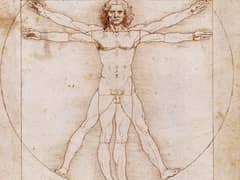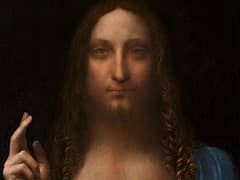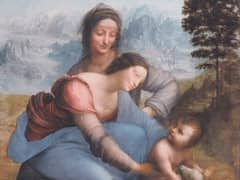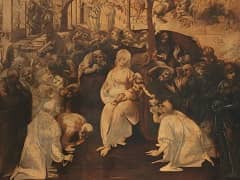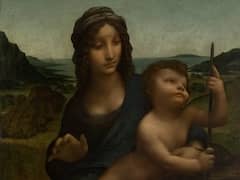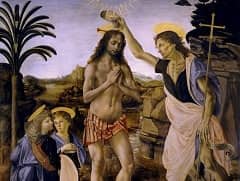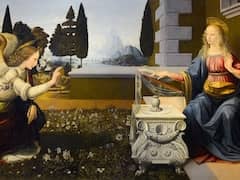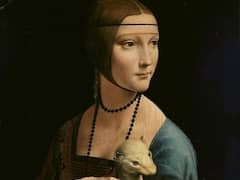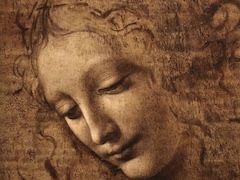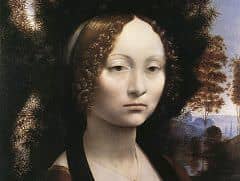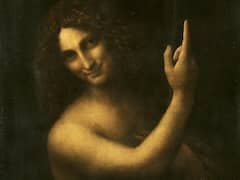Benois Madonna - by Leonardo da Vinci
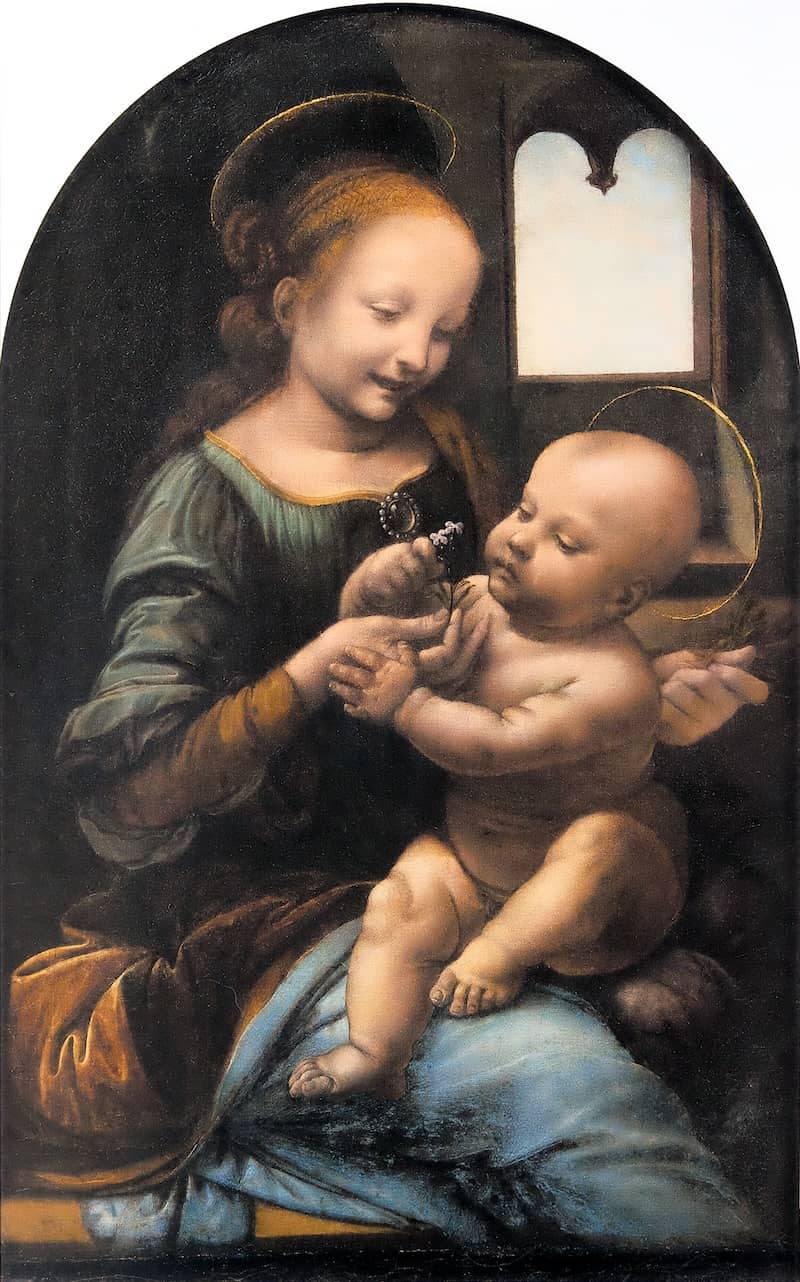
During the very early years of his output Leonardo favoured the subject of the Madonna and Child. He produced several paintings on this theme along with a number of sketches and a large number of drawings. His works showed mother and child in precious private moments and focused on the emotions between them; it was Leonardo's aim that the subjects looked natural. The complexity and detail of these paintings set new standards, yet they are lesser known than his other works.
Upon first examination the Benois Madonna (also called the Madonna of the Flower), is a gay painting with obvious affection shining from the face of the Madonna's girlish face. Further study shows an aspect of grief and reminder of death hidden within the artwork in the form of a flower of the Cruciferae family depicting a cross.
This painting was named after the 19th-century artist, Leon Benois, who sold it to the Hermitage in Leningrad at the beginning of the century. It is widely accepted that this is an authentic Leonardo though not all experts have been complimentary about it:
One unhappy day I was called to see the Benois Madonna, a picture that had turned up in Russia, and has since been acquired by the Hermitage. I found myself confronted by a young woman with a bald forehead and puffed cheeks, a toothless smile, blear eyes, and a furrowed throat. The uncanny, anile apparition plays with a child who looks like a hollow mask fixed on inflated body and limbs. The hands are wretched, the folds purposeless and fussy, the color like whey. And yet I had to acknowledge that this painful affair was the work of Leonardo da Vinci. It was hard, but the effort freed me, and the indignation I felt gave me the resolution to proclaim my freedom." - Berenson.
Perhaps the toothless can be explained by the unfinished state of the work; parts of it are obviously incomplete, with one hand only sketched in.
Dating Leonardo's early works, or proving authenticity, is particularly difficult. This picture was probably painted somewhere between 1475-1480 when it is recorded that Leonardo produced several Virgin Marys, though it has been heavily over painted since that time. A note made by Leonardo on a drawing suggests that the Benois Madonna may be one of two Virgins started in the final months of 1478, the other being the Madonna with the Carnation. Even though Leonardo was still at Verrocchio's workshop these may be the first figures he conceived and realised in total independence from his master.
In any work attributed to Leonardo it is necessary to examine what may make the piece doubtful. With Benois Madonna it is in details like the ears which are simply too inaccurate for a man who paid an almost meticulous attention to anatomy. The Child almost floats in the lap of the Virgin while her smile is almost impressionistic, not typical of Leonardo. Also lacking is the fine attention to the draperies and one might query why there is no landscape through the window.
Scholars discovered the painting in 1909 among the works of various artists being held in private collections. Tsar Nicholas II then acquired it for the Heritage in 1914 after which the attribution of this work to Leonardo was almost immediate and unamimous, though it is now questioned. Originally painted on wood, it was transferred to canvas when it entered the Hermitage, during which time it was severely damaged.



